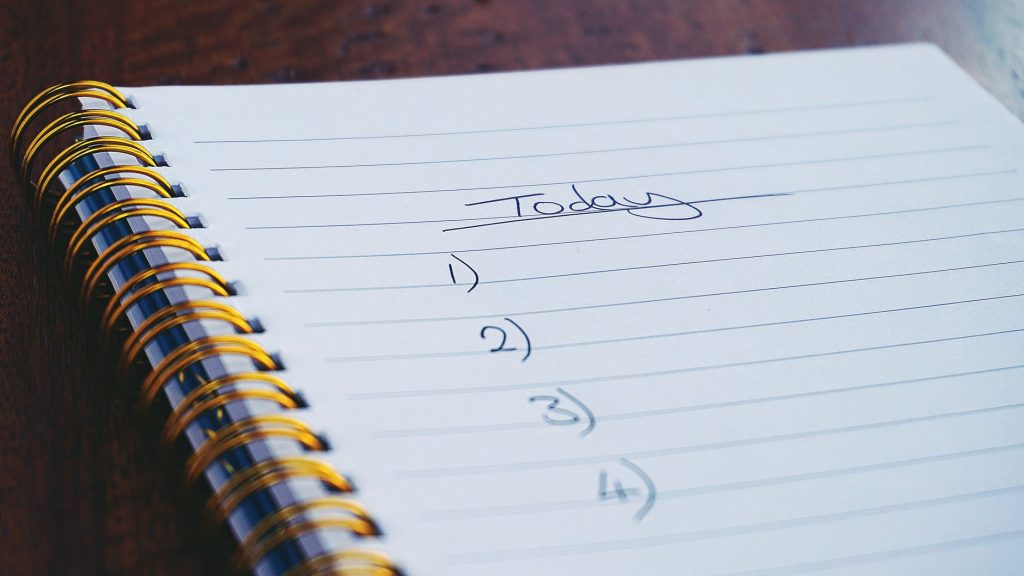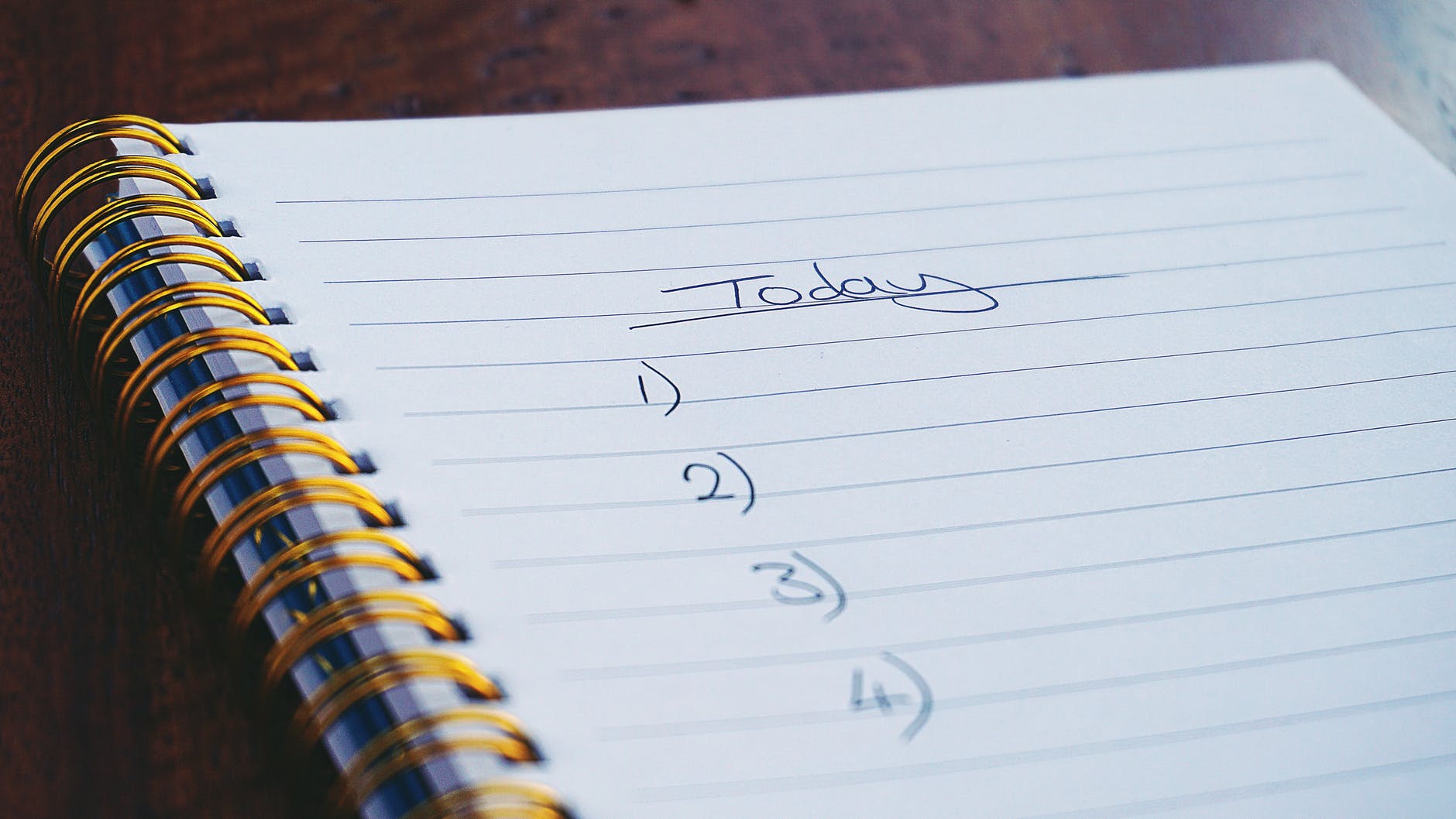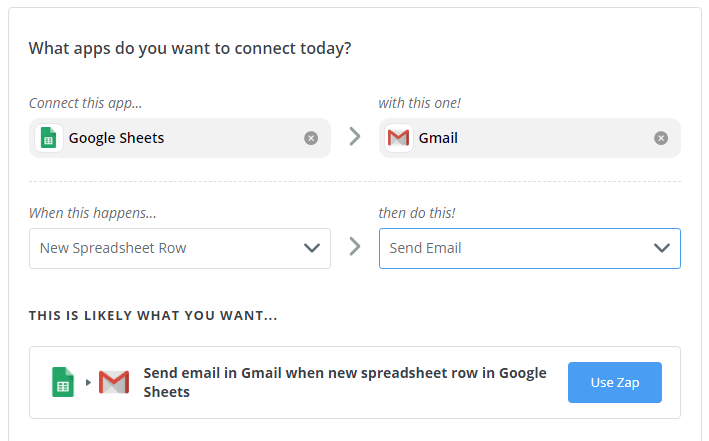Should You Start The Day With The Hardest Thing?
A lot of productivity ‘experts’ suggest that you should start the day with the hardest thing. They claim that you have the most willpower first thing in the day.
But is this advice actually true?
Personally, I’ve found more benefit in starting my day with easier tasks. I have a few very simple routine tasks that I do at the beginning of every workday. Then I’ll often look to my to-do list for any other quick, simple items I can check off.
As I start checking off these items, I feel a sense of accomplishment that spurs me on to get more done.
But should everyone follow this approach?
Probably not.
In this post, I’m going to discuss…
- Why the easy task first approach can work well for a lot of people.
- How to find the best approach for yourself.
- A ‘brain hack’ to trick your brain into doing harder tasks.
- When you should do the hardest task
And I’ll even look at the psychology behind both approaches to see if that provides us with any answers.
The Problem With Morning Routines
The morning is the most important part of your day. Start your morning well and it’s likely that the rest of your day will be productive.
Developing a morning routine is one of the best things you can do if you’re wanting to increase your productivity.
In his book, The Miracle Morning, Hal Elrod says that how you start your day dramatically affects your level of success in all areas of your life. I highly recommend reading The Miracle Morning if you want to develop a solid morning routine.
For every workday, your morning can be split into two categories:
- Pre-work – before you start work
- Work
The problem with most content on morning routines is that it is 90% focused on pre-work. Mainstream advice includes suggestions such as eating a good breakfast, getting at least 15 minutes of exercise, writing in a journal, meditating.
All of which are focused on the pre-work portion of the morning.
Pre-work is important. If you get that right, it will be easier to transition into a productive workday.
But all the benefits from your pre-work morning routine can be undone if you don’t start the ‘work’ part of your day properly.
The first 20 minutes of your workday is just as important as the first 20 minutes after you get out of bed.
There is one question to answer at the start of your workday….
“What do I do first?”
Your answer to this question can potentially make or break your workday. Making the wrong choice could result in procrastination, frustration or reduced motivation.
Definitely not ideal ways to begin your workday.
You have to find an approach to the start of your workday that makes you feel good, motivated and ready to tackle the rest of the day.
For some people, it might be starting the workday with the hardest task. For others, it will be starting the day with the easiest task.
Breaking Down The Psychology
I’m sure you would agree that you want to avoid procrastination during the workday. Procrastination is the biggest productivity killer.
It is estimated that the average person loses 55 days every working year through procrastination.
So clearly, your approach to the start of the workday should be one that minimizes procrastination.
If this is the case, you need to consider what causes us to procrastinate.
Procrastination is closely tied to motivation. When your motivation to carry out any given task is very high, you’re unlikely to procrastinate.
But there are various factors that can demotivate a person, resulting in procrastination. The most common demotivating factors are:
- Perceived difficulty
- Lack of reward or pain
- Fear
- Lack of energy
- Overwhelm
- Stress
If any of these factors outweigh your desire to complete a task, then you’re likely to procrastinate. It will take a lot of self-control and willpower to overcome these demotivating factors.
Starting your day with procrastination can create a snowball effect leading to more procrastination throughout the rest of the day. It’s a vicious cycle.
When you spend 30 minutes on social media instead of working on the project you need to complete, your feelings of overwhelm and stress increase.
Not only that, but the types of activities that people commonly use to distract themselves from work are highly addictive. This makes it even harder to end the cycle of procrastination.
Social media channels like Facebook and Instagram have been designed to trigger dopamine production in your brain. Dopamine is a feel-good chemical released in the brain when you do something pleasurable. This includes eating sweet foods, having sex, taking drugs and getting notifications on Instagram.
When you procrastinate by checking your Facebook feed, eating or smoking a cigarette, your brain gets a taste of the dopamine. The dopamine hit is pleasurable, so now your brain tells you to do more of the thing that gave you the dopamine.
Now you’re feeling even more overwhelmed because you still have to do the project with less time. AND your brain is telling you to procrastinate, so it can get another hit of dopamine.
The rest of your workday will almost certainly be a write-off. And that can even carry over to the next day…and the next day.
You should see now why avoiding procrastination early in the workday is absolutely crucial.
To better understand procrastination, it helps to look to an example that almost everyone can relate to… writing essays.
You can probably recall many times in high school or university where you had 6 weeks to write an essay and you left it until the night before.
Going back to the list of demotivating factors above, there are two key factors that lead to this procrastination in students…
- Perceived difficulty
- Lack of reward or pain
When a student first receives the assignment, the perceived difficulty is high. They have to do a lot of research on the topic, write and then edit the essay.
The motivation to start writing the essay immediately is low because there is little reward for starting early or pain from not starting early.
Tony Robbins talks about the two major driving forces in a person’s life being pain and pleasure. If pain outweighs pleasure, a person will take action to resolve the pain. He explains this concept in this video:
For the procrastinating student, it’s the pain of getting in trouble with their teacher and getting a bad grade that motivates them to complete the essay the night before it’s due.
Yes, it’s going to be difficult to write the essay in just one night. The perceived difficulty is still high. Even higher now that they have less time.
But the pain of getting in trouble with their teacher and parents outweighs the pleasure of procrastinating.
This brings me to the major reason I don’t start the day with the hardest thing.
The perceived difficulty of completing the hardest task is generally going to be high. Which means, unless my willpower is high that day, I’m likely to procrastinate on that task.
I would start seeking out distractions like social media, food, click-bait news websites… And that puts me into the dopamine craving cycle that can ruin the remainder of the day.
The only exception to this would be if I had a very short deadline to complete the hardest task of the day. AND there were negative consequences to not completing that task by the deadline.
In this case, the pain of not acting on the given task would be great enough to overcome any desire to procrastinate.
How To Trick Your Brain Into Doing The Hardest Thing
No matter when you try to tackle your most difficult task of the day, the perceived difficulty will always be high.
And therefore, it’s likely that you will have some desire to procrastinate.
What if there were a way to trick your brain into wanting to do the difficult task?
You could impose your own deadline and punishment for not completing the task. Or you could create a reward for completing the task. This is a concept known as Operant Conditioning, developed by B.F Skinner. It can work but may not always be practical.
But there is another way to do this.
A little earlier, I discussed how the chemical dopamine works. When you’re procrastinating, dopamine works against you. There’s another side to this…
You can make dopamine work in your favor.
It’s possible to make your brain seek out dopamine from positive behaviors like doing your work. Instead of negative behaviors like social media, drinking and smoking.
Your brain is able to remember what produced the pleasurable dopamine spike. To provide more of this pleasure to its reward centers, your brain will start to crave whatever substance or behavior produced the dopamine hit.
If you’re clever, you can use this mechanism to reinforce positive behavior.
I do this by using checklists.
Lauren Marchese from Trello discusses how your brain releases a bit of dopamine every time you cross something off a checklist. That hit of dopamine is enough to make your brain associate the act of marking an item of your list with pleasure.

By starting your day with the easiest things, you can get several small dopamine spikes from crossing those small items of your checklist.
When you reach your more difficult tasks, your brain will be seeking more dopamine hits and will remember that the dopamine comes from crossing items off your checklist. Now your brain is motivated to do the work that will give it the dopamine hit.
There are a few tips to follow if you want to take full advantage of this brain hack:
- Keep a paper to-do list – I’ve generally found paper lists are more effective than digital lists for this purpose. But an online tool like Trello can also produce a similar effect.
- Include easy items on your checklist. This will give you the dopamine hits early and create the association between the checklist and pleasure.
- Limit other sources of dopamine – sugary and salty foods, alcohol, cigarettes, drugs, social media, TV. Your dopamine receptors can become damaged if you flood your body with too much dopamine. This raises your pleasure threshold and crossing items off your checklist probably won’t make the cut
- Break up the hardest tasks – break up those harder tasks into smaller items on your to-do list. If tasks are too large or daunting, your brain will still be relatively unmotivated to complete the task. When you have more small tasks on the list, you will get more dopamine hits, further reinforcing the behavior
- Don’t overdo it. You shouldn’t add tasks ‘tie my shoes,’ ‘drive to work,’ to your list just to get the dopamine hit from crossing them off.
- Write your to-do list in the morning or night before.
What Easy Tasks Should You Start With
By starting your workday with easier tasks, you can limit procrastination, create momentum and trick your brain into wanting to do harder tasks later in the day.
If you’re convinced that this is the best approach, you might be wondering what ‘easy’ tasks you should start with. It’s an important decision to make.
There are several things to consider…
Task Duration
Easy doesn’t necessarily mean fast. I like to include a few tasks that I can complete quickly – under 5 minutes. It could be replying to a certain email or tidying my desk. These quick tasks start to build momentum and give you the small dopamine hit when checked off your list.
Likelihood of distractions
I try to avoid tasks that could easily lead to distractions and derail me early on. Email is a major culprit here. It’s very easy to get drawn into an email with a click-bait subject line and find yourself being side-tracked for the next 30 minutes.
Involvement of others
If a task requires anyone else for it to be completed, it creates a lot of variables that are out of your control. It may seem like an easy task, but if you’re relying on someone else in order to complete it, you could easily be derailed if the other person is busy or unavailable. Leave those tasks for later in the day if possible.
Well defined tasks
This was one of the biggest things I took away from the book Getting Things Done by David Allen. Any task on your to-do list should be clearly defined. Always ask yourself: What needs to happen for it to be marked off your list?
How to Know Whether You Should Start With The Easiest or Hardest Thing
Almost everything I’ve said so far would indicate you should start your workday with easy to complete tasks.
I do think this is the best approach for most people. But everyone is different. Some people will do better starting their day with the hardest thing.
The best way to find out is by testing.
Start your day with easy tasks for two weeks. Keep notes about how productive you were during the day. Then for the following two weeks, start your day with the hardest thing. At the end of this test, you should know what works best for you.
I would suspect that people who are more prone to procrastination, are likely to do better on the easy tasks first approach. If you’re extremely motivated, you may benefit from doing the hardest task first.
Even though I generally suggest that you begin with easier tasks, I would suggest tackling the harder tasks in the morning.
According to Business Insider, people are generally more alert in the morning and are better able to avoid distractions. This suggests that the hardest thing should be done during the morning.
But again, this will vary from person to person. You need to develop the self-awareness to understand when you work best.
Summary
Something to take away from this post is that dogmatic productivity or self-help advice should be treated with suspicion.
I’ve seen many writers or coaches speak as if doing the hardest thing first in your day is absolutely 100% the best approach for everyone. That’s obviously not the case.
This post contains a lot of reasons why doing easier tasks first in your workday is the best approach for a lot of people. If you’re the person who always left assignments in high school to the last minute, then this approach is probably best for you.
But there is also a case for doing the hardest thing first. That approach will work better for some people. Those people don’t need hacks to make their brains want to do difficult tasks.
It all comes down to self-awareness. You have to learn how your brain works and how you can get the best results from it. If you can develop that awareness, it won’t be difficult to know whether you should do the hardest or easiest thing first.
If you’re looking for a system to become more productive, I recommend reading David Allen’s book Getting Things Done. I’ve read a lot of content on productivity and found that Allen’s system was the most effective.


